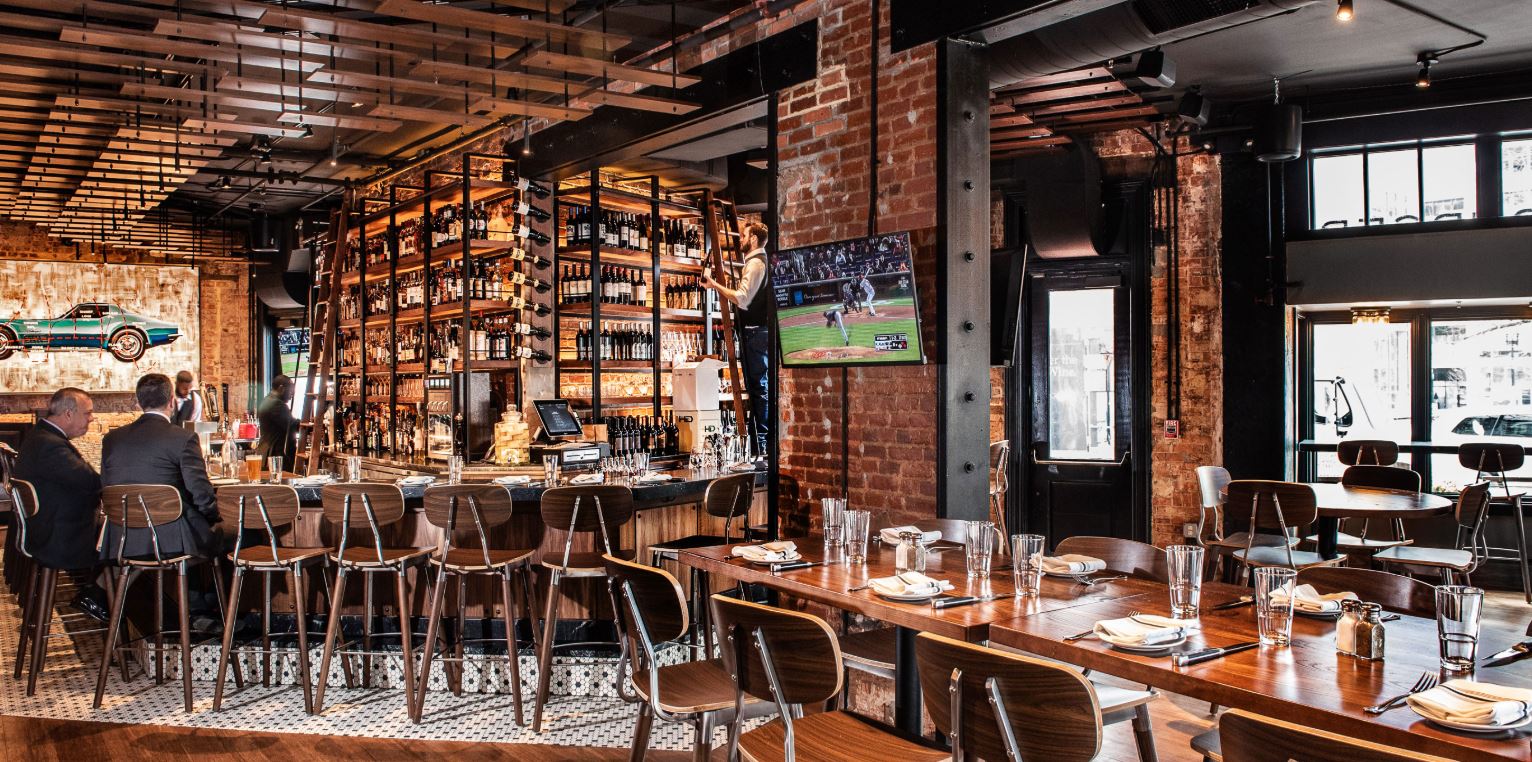Savor Authentic Oriental Cuisine With a Pan-Asian Spin for a Cooking Journey
Starting a cooking journey with authentic Oriental food, boosted with a Pan-Asian twist, uses a distinct chance to explore the rich tapestry of flavors that define the region's diverse cooking traditions. This experience welcomes you to appreciate the charming equilibrium of preferences-- pleasant, salty, spicy, and sour-- balanced by aromatic herbs and spices. Think of the ingenious combination of Thai curry and ramen or the unforeseen pleasure of sushi burritos. As you consider these tempting recipes, take into consideration the social narratives and historical influences that form them, each bite using a story waiting to be found.

Checking Out Pan-Asian Tastes
In the realm of international gastronomy, Pan-Asian cuisine stands apart for its amazing variety and the unified interaction of tastes from different Eastern cultures. This cooking technique commemorates the rich practices and special components located across the continent, producing a tapestry of preferences that is both gratifying and appealing. Key to Pan-Asian cuisine is its ability to stabilize contrasting flavors-- wonderful, salted, spicy, and sour-- while highlighting the freshness and top quality of each active ingredient.
From the umami-rich soy sauce of Japan to the fiery chili peppers of Thailand, Pan-Asian cuisine supplies a substantial scheme of tastes. These elements are usually integrated in creative ways, improving meals with layers of intricacy. As an example, using great smelling natural herbs such as lemongrass and cilantro, typical in Vietnamese and Thai food, adds a rejuvenating illumination to recipes, while the consolidation of coconut milk supplies a luscious, abundant texture.
The emphasis on fresh produce and aromatic spices makes certain that each meal is not only a feast for the taste buds but also for the senses. Pan-Asian cuisine invites restaurants to start a cooking journey, checking out the large and differed landscapes of Eastern gastronomy with every bite.
Combination Meals to Try
While Pan-Asian food is celebrated for its typical flavors, the modern cooking landscape is progressively welcoming fusion recipes that blend these timeless aspects with impacts from other regions. This cutting-edge technique not only honors the rich heritage of Oriental culinary arts but additionally presents novel preference experiences that interest contemporary tastes.
An archetype of such a fusion meal is the Korean-Mexican taco, where marinated bulgogi beef is covered in a warm tortilla, topped with kimchi and a zesty gochujang-infused salsa. This combination marries the vibrant, mouthwatering tastes of Korea with the dynamic, fresh aspects of Mexican food. Likewise, sushi burritos have actually gained popularity, joining together the delicate virtuosity of Japanese sushi with the hearty, hand-held ease of a burrito, commonly including fusion active ingredients like tempura shrimp and avocado with a drizzle of wasabi mayo.
Another significant dish is Thai curry ramen, which instills the creamy, aromatic spices of Thai curry into the calming brew of traditional Japanese ramen, creating a harmonious blend that entices the senses. These blend meals extend past plain novelty; they stand for a culinary dialogue between societies, urging exploration and innovation in the globe of Pan-Asian food.
Essential Components and Flavors
To truly appreciate Pan-Asian cuisine, one should comprehend the necessary active ingredients and spices that form its foundation. This diverse cooking style attracts from a rich tapestry of Eastern practices, using a harmonious mix of textures and flavors. Trick active ingredients include soy sauce, fish sauce, and oyster sauce, which impart a tasty umami deepness necessary to helpful resources Oriental recipes. Complementary to these are rice vinegar and mirin, offering a delicate level of acidity and sweetness.
Fragrant components are crucial, with lemongrass, garlic, and ginger being ubiquitous across various Pan-Asian dishes. These ingredients give an aromatic base that improves the intricacy of flavors. Seasonings such as star anise, cardamom, and cinnamon introduce heat and character, echoing impacts from areas like China and India.

Cooking Methods and Tips
Understanding the art of Pan-Asian cuisine needs knowledge with its distinct cooking techniques, each adding to the vibrant tapestry of flavors this culinary tradition is celebrated for. Central to these approaches is the stir-fry, a quick cooking strategy that maintains the dietary integrity and vibrant colors of components. Using a wok, the stir-fry method allows for even heat circulation, important for attaining the particular texture and flavor balance of Pan-Asian dishes.
One more fundamental strategy is steaming, particularly prevalent in Chinese cuisine. This mild approach keeps the all-natural flavors and nutrients of active ingredients, making it perfect for seafood site link and vegetables. Dumplings, a beloved staple, frequently take advantage of steaming, causing soft, succulent structures.
Cooking, additionally essential, imparts smoky midsts to dishes such as Korean bulgogi or Japanese yakitori (Best ambiance restaurants Islamabad). This method often entails marinading components, allowing flavors to permeate deeply before food preparation over an open flame or warmer
Last but not least, understanding the art of balancing flavors-- pleasant, sour, salted, bitter, and umami-- is critical. Appropriately layering these elements can boost a meal from common to remarkable, offering a complicated and satisfying cooking experience that symbolizes the essence of Pan-Asian food.
Dining Experiences Worldwide
Around the world, Pan-Asian cuisine supplies an unrivaled dining experience, celebrated for its rich tapestry of tastes and vibrant discussions. This culinary sensation has actually transcended social limits, catching the hearts and tastes of food enthusiasts worldwide. In multicultural cities fresh York, London, and Sydney, Pan-Asian restaurants More Help offer as melting pots where culinary practices from Thailand, Japan, China, and past converge, supplying restaurants with an eclectic mix of recipes that highlight the area's variety.
The international charm of Pan-Asian food exists in its capacity to supply both authenticity and innovation. Chefs skillfully marry traditional ingredients such as lemongrass, soy sauce, and miso with contemporary methods, leading to dishes that are both acquainted and refreshingly brand-new. This blend allows diners to begin on a culinary journey that respects heritage while accepting modernity.
In addition, eating experiences are boosted via thoughtfully made settings that mirror the values of Pan-Asian aesthetic appeals. From minimalist Japanese-inspired insides to lively Thai-themed areas, each restaurant offers an one-of-a-kind ambiance that enhances the cooking offerings. Consequently, patrons are not merely taking in a dish however partaking in a cultural experience, making Pan-Asian dining a truly global sensation.
Verdict
The exploration of Pan-Asian cuisine supplies an extensive understanding of the complex interplay of flavors and culinary customs across Asia. By accepting fusion recipes such as Thai curry ramen and sushi burritos, the cooking trip not just highlights the adaptability of conventional active ingredients but also showcases cutting-edge contemporary techniques. This gastronomic adventure, enriched by cooking methods and crucial seasonings, offers a distinct possibility to appreciate the multiculturalism and cooking creativity that specify Pan-Asian cuisine on a worldwide scale.
Getting started on a culinary trip through authentic Eastern cuisine, enhanced with a Pan-Asian twist, supplies a special opportunity to discover the rich tapestry of flavors that specify the area's diverse cooking traditions.In the realm of international gastronomy, Pan-Asian cuisine stands out for its exceptional diversity and the harmonious interplay of flavors from numerous Asian cultures. Trick to Pan-Asian food is its capability to stabilize contrasting flavors-- wonderful, salted, spicy, and sour-- while highlighting the freshness and top quality of each ingredient.
